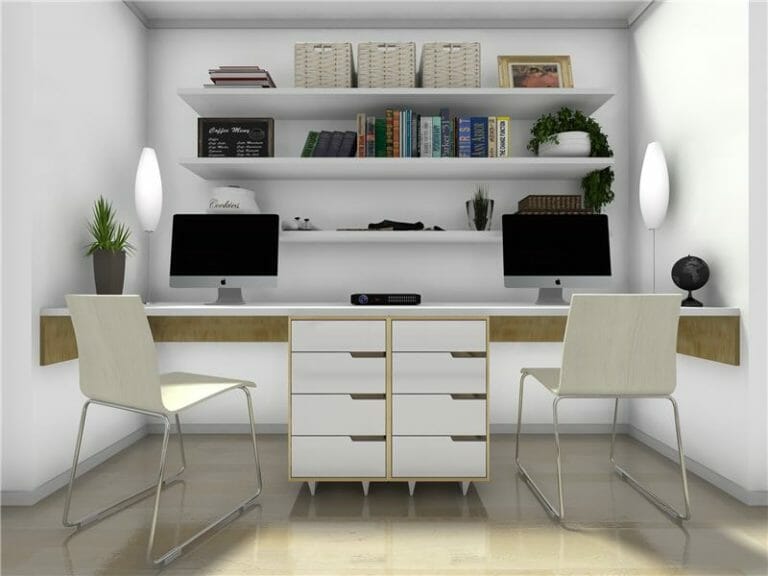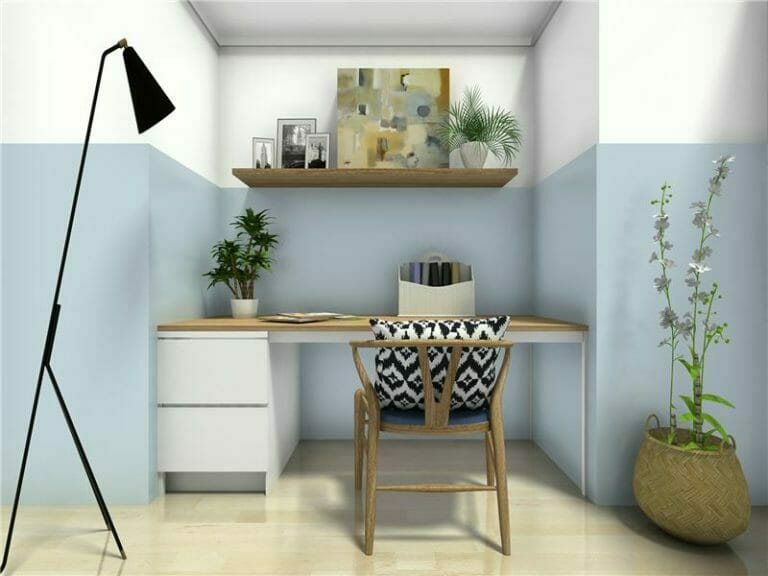Space and Circulation in Your Office Layout
As you plan your new office layout, it’s important to think through the space required around each item of furniture.

Want to know what to think about when designing an office layout? Certain office elements have defined space needs – for example, file cabinets need enough room to open their drawers entirely.
Additionally, the circulation path to essential items in your office needs a comfortable amount of room. As the passage from the office entrance to your desk should be clear and easy to navigate.
But how much space is enough? This article provides our top tips to create an office layout that works.
Standard Measurements to Consider in Your Office Layout
Desk chair space
As you plan your office layout, remember that a standard desk chair usually requires an area footprint of about 42” (107cm) square. Most of this dimension (approximately 20-30” or 50-76cm) is behind the desk chair. Reserving this amount of space will allow you to easily back up and swivel to access a credenza or bookshelves placed behind you.

Additionally, if you are planning to have a large desk, think about whether you need to slide your seat side to side to access items on your desk – if so, make sure the desk is the type without lower drawers that would block your motion.
Guest chair space
Allow anywhere from 48 to 60” (122 to 152cm) for guest seating that will face your desk, which includes 20-30” (50-76cm) between the desk and the chairs. This arrangement allows space for the furniture, allows guests to walk to the seats comfortably, and provides space for their legs and feet when sitting.

File cabinets
File cabinets can take up quite a bit of space in your office layout. For example, a standard vertical file cabinet that is 25” deep, will need 23” of space in front of the unit to fully open the drawer to access the files in the back. A standard horizontal file cabinet that is 20” deep will need about 18” of space in front of it for file access.

Bookshelf space
Bookshelves are often 12” (30cm) deep and you should provide at least another 12 – 24” to have space to stand and access books and binders.
Whiteboard or blackboard space
If you use a whiteboard or blackboard for brainstorming, make sure you leave about 30” in front of it to have space and move to stand in front of the board.
Circulation Considerations
Another important element to consider as you create your office layout is workflow, or how you and others will navigate the space. It’s a good idea to jot down your main goals for the office as well as the tasks you will perform, and think about how you will circulate between them. For example:
- If you enter and exit the room quite a bit during the day, make sure the circulation from your desk to the door is quick and easy.
- If clients or guests will visit your office, the path from the entrance to the guest seating is an important circulation element in your office layout.
- If you use an individual item, like a printer or file cabinet quite a bit, you may consider placing it within reach, for example, using a file cabinet/credenza behind your desk. If you do not use your printer or files very often, you could place them across the room, with a clear access path.

How to Create a Great Office Layout
One way to create a great office layout is to use a software tool such as RoomSketcher App. This allows you to move furniture the easy way – on your monitor or tablet – and visualize how the office layout will look.
Don't forget to share this post!
Recommended Reads

9 Essential Home Office Design Tips
Planning a home office? These 9 essential tips will help you create a beautiful and practical home office design.

Plan Your Office Design With RoomSketcher
Plan and visualize your office design online and in 3D! Create layouts, floor plans, 3D images, source furniture and more with RoomSketcher.

Design Your Ideal Home Office
A well-designed, functional, and beautiful home office can make your working hours more efficient and more enjoyable.
